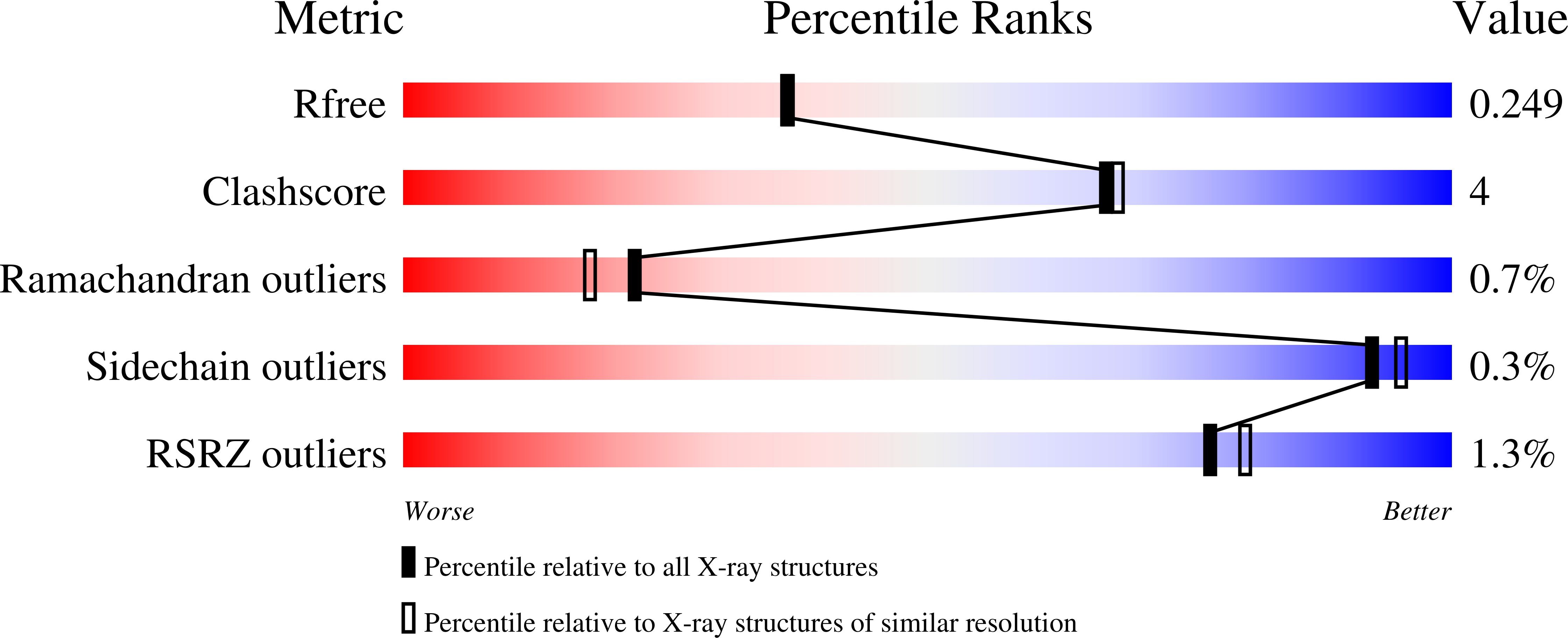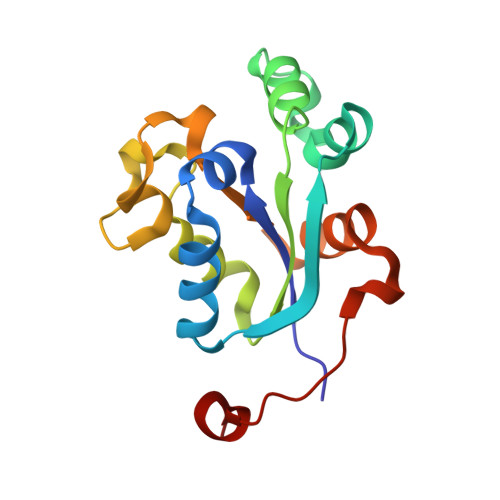Structure of Nucleoside Diphosphate Kinase from the Pacific Shrimp (Litopenaeus Vannamei) in Binary Complexes with Purine and Pyrimidine Nucleoside Diphosphates
Lopez-Zavala, A.A., Quintero-Reyez, I.E., Carrasco-Miranda, J.S., Stojanoff, V., Weichsel, A., Rudino-Pinera, E., Sotelo-Mundo, R.R.(2014) Acta Crystallogr Sect F Struct Biol Cryst Commun 79: 1150
- PubMed: 25195883
- DOI: https://doi.org/10.1107/S2053230X1401557X
- Primary Citation of Related Structures:
4UOF, 4UOG, 4UOH - PubMed Abstract:
Nucleoside diphosphate kinase (NDK; EC 2.7.4.6) is an enzyme that catalyzes the third phosphorylation of nucleoside diphosphates, leading to nucleoside triphosphates for DNA replication. Expression of the NDK from Litopenaeus vannamei (LvNDK) is known to be regulated under viral infection. Also, as determined by isothermal titration calorimetry, LvNDK binds both purine and pyrimidine deoxynucleoside diphosphates with high binding affinity for dGDP and dADP and with no heat of binding interaction for dCDP [Quintero-Reyes et al. (2012), J. Bioenerg. Biomembr. 44, 325-331]. In order to investigate the differences in selectivity, LvNDK was crystallized as binary complexes with both acceptor (dADP and dCDP) and donor (ADP) phosphate-group nucleoside diphosphate substrates and their structures were determined. The three structures with purine or pyrimidine nucleotide ligands are all hexameric. Also, the binding of deoxy or ribonucleotides is similar, as in the former a water molecule replaces the hydrogen bond made by Lys11 to the 2'-hydroxyl group of the ribose moiety. This allows Lys11 to maintain a catalytically favourable conformation independently of the kind of sugar found in the nucleotide. Because of this, shrimp NDK may phosphorylate nucleotide analogues to inhibit the viral infections that attack this organism.
Organizational Affiliation:
Centro de Investigación en Alimentación y Desarrollo, A.C. (CIAD), Carretera a Ejido La Victoria Km 0.6, Apartado Postal 1735, Hermosillo, 83304 Sonora, Mexico.
















